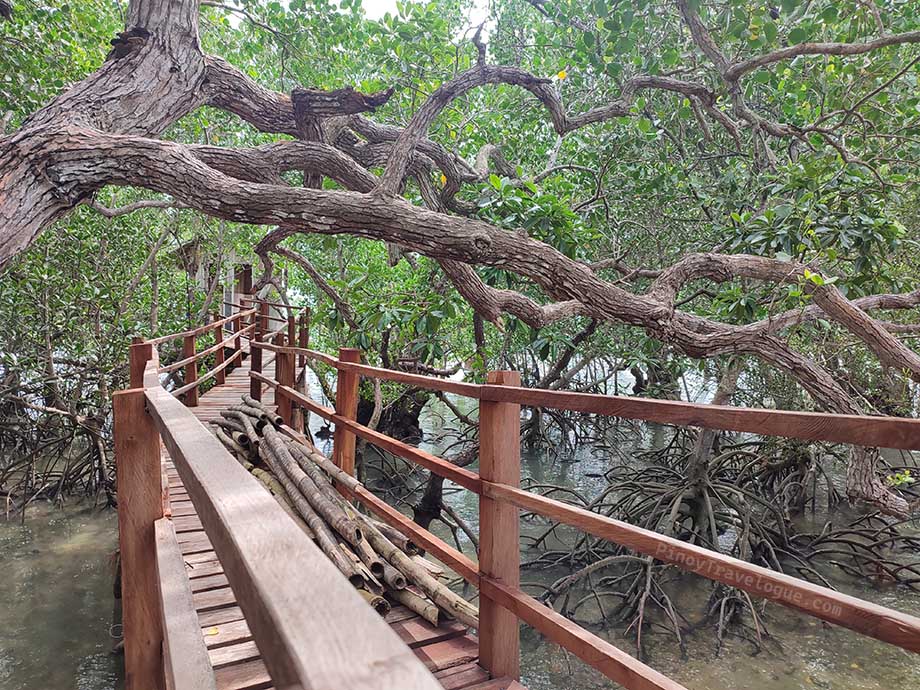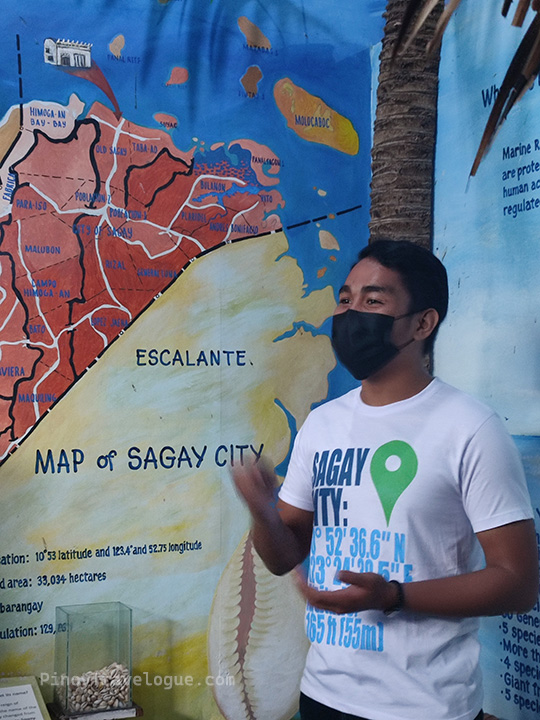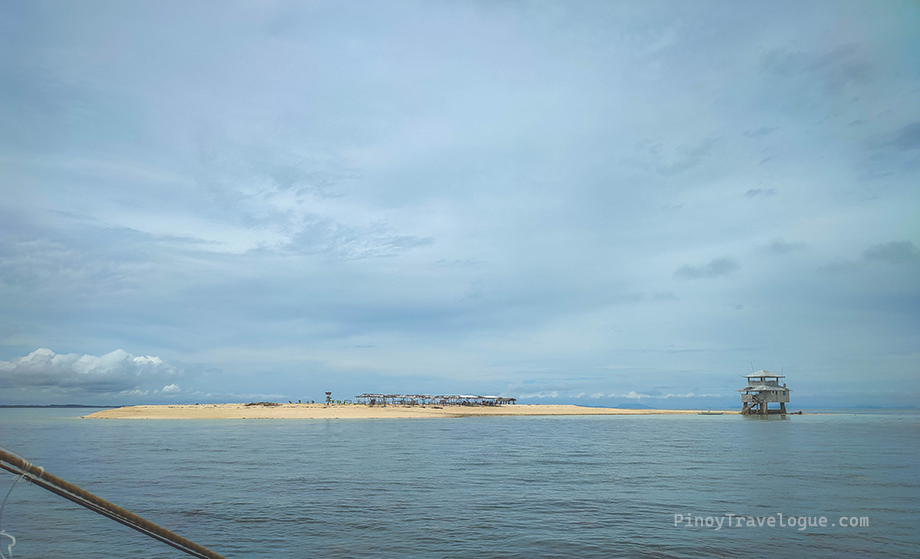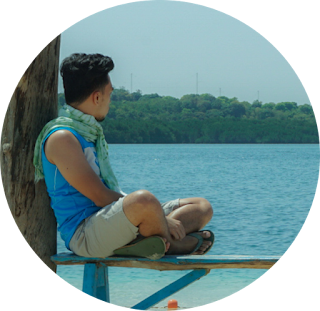 |
| Carbin Reef in Sagay City, Negros Occidental | via Sagay Tourism Office |
"Community-based tourism" (or CBT) is a part of the industry that highlights the significance of community participation and empowerment in the development of tourism activities. It puts the local community of a certain tourist spot—the often overlooked stakeholders—at the heart of the development to promote not only the tourist destination they live in, but also the quality of life and sustainable living among them.
The Philippine Tourism Promotions Board (TPB) invited me, along with other travel bloggers and journalists, to cover the Community-based Tourism Workshop that they would host in Sagay City, north of Negros Occidental province. The three-day event was partaken by different tourism stakeholders, which included local tour guides, site attendants, boat operators and the city government’s tourism personnel among others.
As part of the media group, we toured the coastal city and visited the tourist attractions that the workshop participants represent. We were soaked in the city's tourism jewels that are nestled within its protected waters.
Sagay Marine Reserve
Beyond Sagay City's lengthy coastline at the northern tip of Negros Island is an abundant marine ecosystem that has blessed the city with a profitable fishing industry. But before the creation of laws that now protect these waters and aquatic resources, poachers and illegal fishing operators who practiced destructive fishing techniques were rampant in the past, which led to degradation that then endangered the livelihood of many Sagaynons. This prompted the local government to initiate a conservation program in the 1970s.
 |
| Aerial shot of Suyac Island, part of Sagay Marine Reserve | via Sagay Tourism Office |
Little by little as years passed, portions of Sagay's waters were declared protected sanctuaries. In 1995, by virtue of Presidential Proclamation 592, an extensive 28,300 hectares were gazetted as the Sagay Marine Reserve (SMR).
The Republic Act 9106 of 2001, which established the management of the Reserve, then institutionalized the entire 32,000 hectares of the city's territorial waters.
These laws categorized SMR as a "protected seascape" under the National Integrated Protected Area System (NIPAS) of the country's environment and natural resources department (DENR).
 |
| Old-growth mangrove forest of Suyac Island |
Sagay Marine Reserve comprised the islands and islets of Molocaboc, Molocaboc Diut, Matabas, and Suyac, and the surrounding reefs of Carbin, Panal and Macahulom. It also includes the coastal waters of Himoga-an Baybay, Old Sagay, Taba-ao, Bulanon, Molocaboc and Vito, the six barangays that line the shores of Sagay City. The extent of the marine reserve covers hectares of mangrove forests, coral sanctuaries and seagrass beds.
READ ALSO: Sagaynon Faith: Sagay City's Vito Church and Palapak Tradition
 |
| Sagay City seal |
Sagay's decades-long conservation program preserve and maintain the city's rich marine resources through a community-based management. The protection efforts brought about positive transformations both to the environment and the city's local economy. In the 1997 Galing Pook Awards, Sagay City bagged one of the Ten Outstanding Programs award.
Museo sang Bata sa Negros
"Where love for nature begins," goes Sagay City’s tourism branding. Museo sang Bata sa Negros (Children’s Museum in Negros) is that spot in the city that embodies this meaningful catchphrase the most.
 |
| Museo sang Bata sa Negros |
The museum’s main galleries focus on marine life—especially of the species that thrive within Sagay’s seascape—the marine and the terrestrial ecosystems, and their conservation. It was established in 2003 to serve as an alternative learning hub for the residents in the area, whose livelihood mostly depends on Sagay’s water resources that might risk depletion if not properly safeguarded.
 |
| Inside Museo sang Bata sa Negros |
 |
| Museo sang Bata's interactive gallery |
In other parts of Museo’s two-story building, there are local arts and crafts exhibits, a gallery for Filipino values education, a library, and a Kidzoona-like section that features traditional Filipino games and funfair that kids and kids-at-heart will be fond of.
Museo sang Bata is not only for the children, but also by the children. Kids ages eight to 12 usually run the tour around the museum. Unfortunately, our visit coincided with grade schoolers' exam week, so we were instead ushered to the eye-catching galleries of the museum by several teenagers who were once part of the Junior Guide Program—one of Museo’s impactful initiatives for the children of the fisherfolk community.
 |
| One of Museo's senior guides |
Not only did the energetic young guides make Museo’s learning tour more engaging, museum guiding also hones the children’s social and interpersonal skills. It also instills in them the knowledge and the importance of caring for the environment at such an early age.
When asked about how they felt about the call up to take the place of the youngsters in guiding us that day, the now "senior guides" expressed that for them, going back to the museum had been nostalgic. It was clear that the kids of Museo sang Bata sa Negros grow up loving what they do.
Carbin Reef
“Every year, it [sandbar] slightly changes shape because of the tide,” said Helen as we disembarked the pump boat that brought us to Carbin Reef.
 |
| Aerial shot of the tongue-shaped Carbin Reef | via Sagay Tourism Office |
Considered Sagay tourism’s crowning jewel, Carbin Reef is a 200-hectare marine sanctuary with a (usually) tongue-shaped sandbar formed from coral rubbles. The sandbar is reachable by a 15-minute boat ride from Old Sagay’s port.
The first among the conservation areas in the city’s waters, Carbin’s fish sanctuary was instituted in the 1980s, at the onset of the local government’s program to rehabilitate the mistreated areas of SMR.
READ ALSO: Treasures of Ticao Island
 |
| Carbin Reef view from afar |
As part of a protected area, there are barely any structures in Carbin Reef apart from a row of wooden cottages and the raised bi-level concrete watchtower, the only heavy construction, located at the tip of the sandbar. The members of Buhay Dagat Snorkeling Guides Association are among those who renders voluntary patrolling of the reef. Formerly confined to fishing for sustenance, they now double as reef rangers and earn additional income as guides to visiting snorkelers.
Using the gears they provided, the snorkeling guides escorted us to a nearby taklobo (giant clam) sanctuary, where I found the largest clam that I have seen thus far. About the size of a small carry-on luggage, the giant clam was already 15 years old, says one of Buhay Dagat members.
Suyac Island Mangrove Eco Park
Located near Carbin Reef and an equally significant part of the marine reserve, Suyac Island is a 1.8-hectare island with an extensive old-growth mangrove forest that spans about 16 hectares.
 |
| Sonerratia alba or pagatpat |
Suyac is home to nine mangrove species, dominated by the commonly large-sized Sonerratia alba or pagatpat as locally called, and 12,000 flying foxes, the latest count as of writing. Trained island residents conduct the bat count every month.
Central to Suyac Island’s rich biodiversity are the warm, well-informed members of the community, who possess an immeasurable amount of commitment to protect the island’s environs. I could sense their scientific knowledge as they toured our group across the dense mangrove forest, via the eco park’s currently extending 400-meter-long boardwalk.
 |
| A local guide touring us around the eco park |
 |
| View from Suyac Island's watchtower |
Like Carbin Reef, Suyac has a watchtower where anyone can relish a view of the park’s verdant entirety and the surrounding seas. With proper timing, one can also do bat watching there.
Guests may stay in the nipa cottages scattered along the meandering wooden trail and feast on fresh seafood fare, including the island’s version of fish kinilaw (ceviche). A dish with hundreds of regional variations across the country, Sagay’s kinilaw has a hint of sweetness, owing it to the locals’ predilection to use sugar in their cooking (Occidental Negros being the country's "sugar bowl").
 |
| A warm welcome from Suyac's local community |
Developed in 2012, Suyac Island Mangrove Eco Park is the city’s first fully community-based ecotourism program. Months after they started, Super Typhoon Yolanda (international name, Haiyan) ravaged the Visayas region, a catastrophe that ultimately underscored the significance of those mangroves in the lives of the community. Yolanda’s onslaught affected the residents, but they were spared from the heavier aftermath of what was considered one of the most powerful storms endured by mankind. Hence, the locals’ dedication to protect the island which they call home.
Lapus Lapus Floating Cottage
Farther from Old Sagay Port, about 40 minutes of boat ride from there, lies Sagay City’s newest community-based ecotourism initiative. Lapus Lapus Floating Cottages boasts off a naturally formed mangrove maze near its area, as well as vibrant seagrass and coral beds beneath its waters.
 |
| Aerial shot of the Lapus Lapus Floating Cottages | via Sagay Tourism Office and Grilled Cheese Studios |
 |
| Aerial shot of the mangrove maze | via Sagay Tourism Office and Grilled Cheese Studios |
A pandemic-born private enterprise, Lapus Lapus started when a group of fishermen put up cottages on their own and operated on the protected waters. However, the Protected Area Management Board (PAMB), which has jurisdiction over SMR, hampered the operations due to lack of necessary licenses and basic safety and environmental standards.
READ ALSO: A Calming Afternoon Cruise Along Buhatan River
Lapus Lapus was then developed into a community-based business with the aid of local government funding. The floating cottages, which are stationed in a conservation area called Lapus Lapus-Macapagao, part of Brgy. Bulanon, are now compliant with the regulations. The resort attendants also had already undergone proper training.
 |
| One of the resort's floating cottages | via Sagay Tourism Office |
At the tail end of TPB's workshop, the agency turned over two professional kayaks to the members of Lapus Lapus Bulanon Floating Cottages Association that would be used for training their members. “They were in the initial stages of development, so the kayaks from TPB are very timely,” says Helen.
Aside from lounging on the cottages while relishing a view of the mangroves, savoring fresh seafood, and taking a plunge into the emerald sea, guests would soon enjoy more water activities in this part of Sagay’s protected waters.
 |
| Lapus Lapus Bulanon Floating Cottages Association | via Sagay Tourism Office |
More than being a cradle of vibrant history, culture and arts, Sagay is a city that champions sustainable, pro-environment and community-centered tourist destinations, a kind of tourism that "enriches, protects and help build communities," as Helen puts it.
How to Go to Sagay
~ For more information about traveling around Sagay, contact the city's Information and Tourism Office at (+63) 909 091 4278 or reach them via their Facebook page, Sagay Tourism Destinations.
This is a portion of an article that was originally published in the July 2023 issue of Enrich magazine (with some minor revisions).


